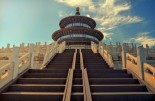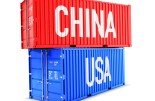Diana Choyleva: A guide to China’s newest stock market

By Diana Choyleva, Chief Economist at Enodo Economics
What Xi Jinping wants, he generally gets. In September 2021, Xi announced that the Chinese capital would set up the Beijing Stock Exchange (BSE) as China’s primary platform serving innovation-oriented small and medium-sized enterprises (SMEs). Just 74 days later, with the ringing of an old bronze bell and red ribbons on a new nameplate, the brand-new bourse took flight.
On November 15, the BSE kicked off with 81 listed companies and a turnover of $ 1.5 billion. This move complements the two main bourses, in Shanghai and Shenzhen, and marks another milestone in the expansion of China’s $ 12.4 trillion equity market, already the world’s largest after the American market. Let Enodo walk you through this development, significant both for Chinese and foreign institutional investors.
So, is this Beijing’s first stock market?
No. The heritage-minded, stock exchange history enthusiast may hunt for the old building that housed Beijing’s first bourse, established in 1918 in Qianmen. The Central China Stock Exchange was the first to be run by Chinese citizens, unlike those run by foreign powers in Shanghai, where securities trading began in the 1860s. Trading everywhere stopped in 1949, until revived in Shanghai in 1990 and Shenzhen in 1991.
How about the second?
Still no. Communist China’s experiments with capitalism include the National Equities Exchange and Quotations (NEEQ) in Beijing, an over-the-counter system nicknamed the ‘new third board’ on its 2013 debut, as NEEQ replaced older trading systems. It would be generous, and incorrect, to describe NEEQ as a success. The BSE has been formed by upgrading NEEQ Select, the exchange’s highest tier.
Where is it?
The BSE is located in NEEQ’s freshly-rebranded building on Financial Street, in western Beijing’s Xicheng district. The acronym might prove an issue – the exchange has yet to announce an index to track the overall market’s movement, reported AP, but BSE already is used for India’s main exchange and indexes.
What firms are listed?
The first batch of 81 Beijing stock exchange-listed companies are mostly private (85%), with the rest being partly state-owned. They included 10 IPOs from companies in tech and manufacturing. Tongxin Transmission, a car parts maker from central Henan province, roared home to close as the biggest gainer, with 494%, chased by Nantong Great Electric, Hebei Zhisheng Information Technology and Anhui Jingsai Technology. All three ended with gains over 200%.
After the first trading day, moves are capped at 30% in either direction, higher than the 20% on Shanghai’s STAR Market and Shenzhen’s ChiNext board, the two Nasdaq-style boards on China’s two major bourses, where the cap is 10%.
Performance was mixed for the other 71 ‘old’ stocks transferred from the NEEQ. Battery-maker BTR, with the highest market value of the 81 firms, was down 8% at the closing bell. NEEQ still boasted just over 7,000 firms in November 2021, mostly SMEs.
Who can trade?
To qualify to trade Beijing Stock Exchange-listed companies, Chinese retail investors must have trading experience of more than 24 months and have at least Rmb 500,000 in securities accounts, on average during the most recent 20 trading sessions. That’s down from the Rmb one million threshold for NEEQ Select.
There’s no asset threshold for institutional investors. About four million retail investors are currently eligible. As for foreign citizens, Qualified Foreign Institutional Investors (QFIIs) and approved overseas traders holding the offshore yuan can also buy and sell stocks on the BSE.
What was said?
At the launch ceremony, Yi Huiman, chairman of the China Securities Regulatory Commission, hailed BSE as ‘another landmark in China’s capital market reform and development’.
Sell it to me!
‘Earlier, smaller, newer’. Compared with the options in Shanghai and Shenzhen, and especially their boards also serving innovative companies, the BSE aims to be cheaper, easier and more flexible. The BSE has adopted a faster listing approvals process and will tolerate a wider, wilder daily trading band.
Private equity and venture capital players are rubbing their hands. The BSE’s more accessible exit channel should motivate more investments in smaller firms. Innovative SMEs may seek to go public on Beijing’s new exchange first, then transfer their listing to Shanghai or Shenzhen if and when they mature.
Why does this matter?
Over 95% of China’s enterprises are SMEs, who despite their modest individual size comprise China’s major job creators, tax payers and growth drivers. Xi has dubbed SMEs the ‘little giants’ of the world’s second-largest economy. Yet they’ve long suffered from insufficient financing.
The Beijing Stock Exchange should also bolster Xi’s drive to foster innovative domestic tech companies, specialising in niche sectors. This will reduce China’s dependence on foreign suppliers. The exchange appears even more attractive at a time when both Beijing and Washington have set hurdles to Chinese firms listing in the USA.
Although China has tightened its grip on companies seeking listings overseas, the BSE is unlikely to prevent Chinese firms from listing or cross-listing abroad. But the new stock exchange in Beijing does give the nation’s political centre more influence over tech and smaller firms, at the possible expense of Shanghai and Shenzhen. And it certainly helps Xi Jinping make his mark on the development of China’s capital markets.
Enodo Economics is an independent macroeconomic/political research, forecasting and training company that focuses on China and its global impact. The firm helps clients by presenting in-depth analysis with clear conclusions to guide investment, business and policy decisions.








